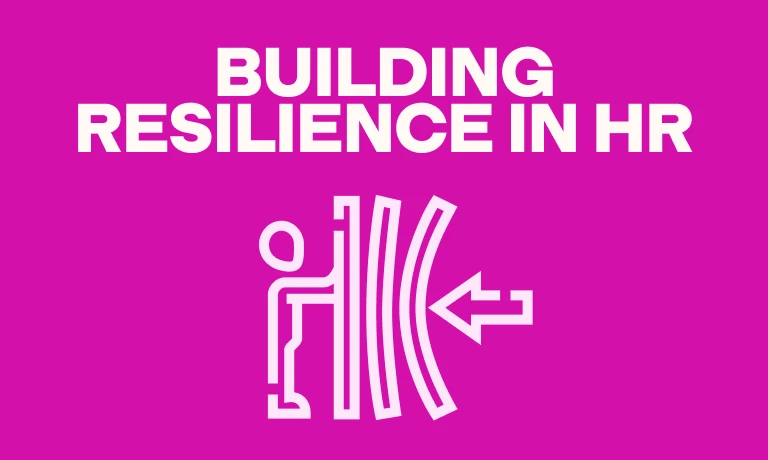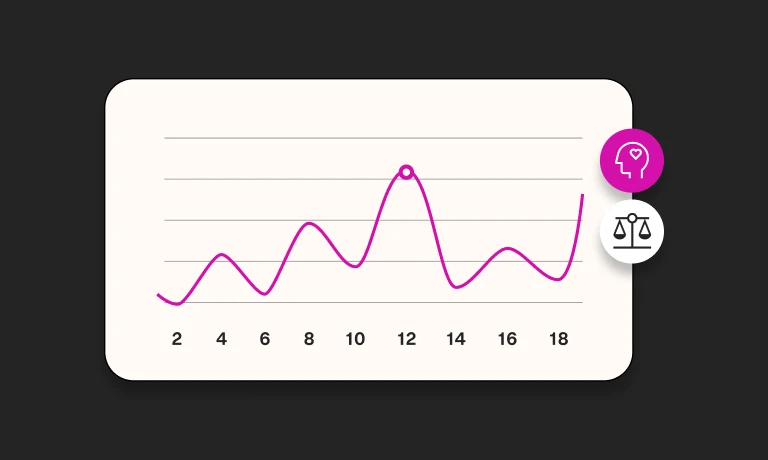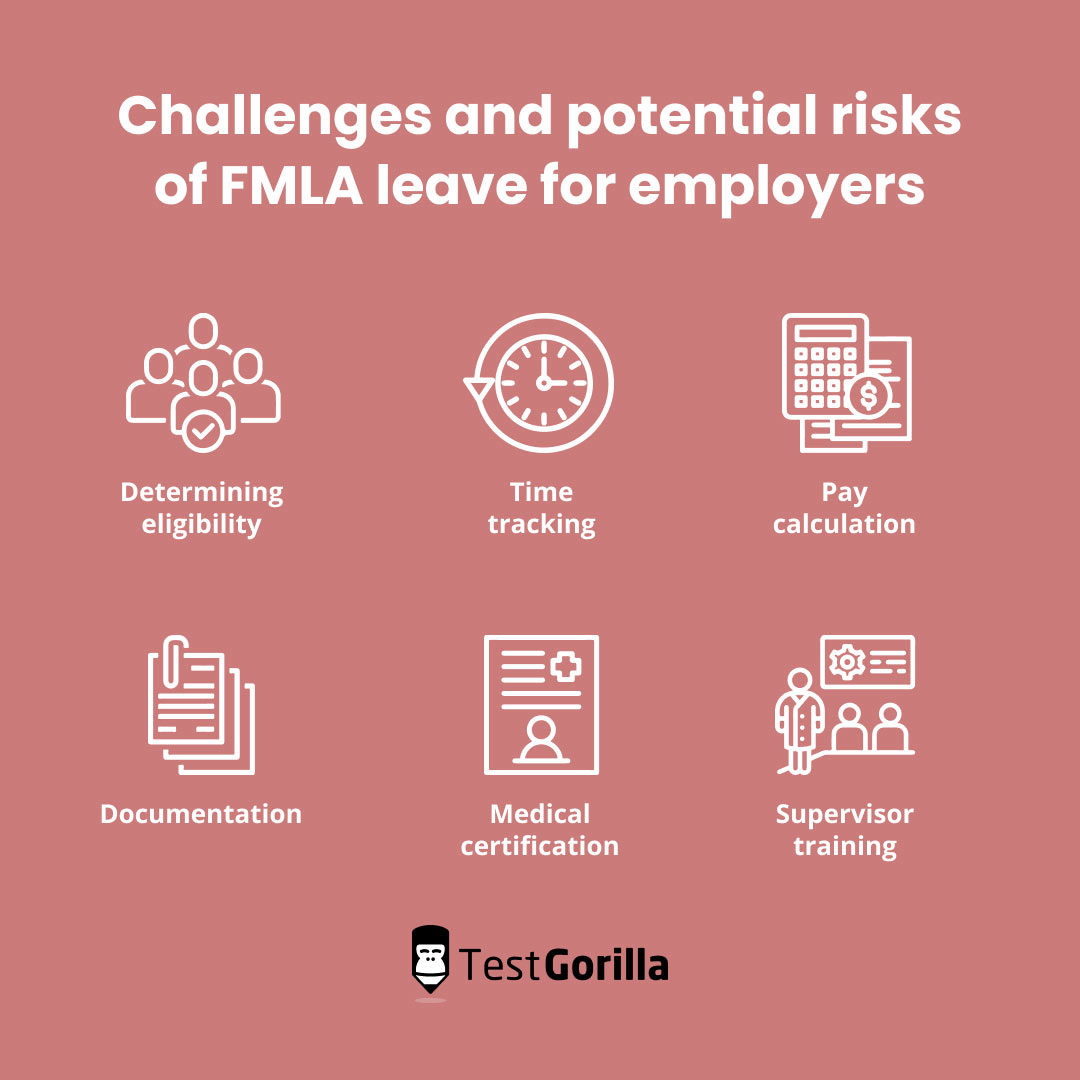The Family and Medical Leave Act (FMLA) is a federal law that guarantees protected unpaid leave for certain employees. Thresholds for both the employer and individual employees must be met before FMLA applies, which can make for a headache when trying to sort out what type of leave your business needs to offer.
This article outlines how eligibility is determined and the specifics of FMLA leave duration and purpose. We also look at how FMLA interacts with other leave laws and employment policies and identify the challenges (and solutions) of navigating FMLA as an employer.
Table of contents
- What is FMLA leave, and how does it work?
- Difference between FMLA and PFL (Paid Family Leave)
- Can employers choose to provide paid leave instead of FMLA leave?
- Can employers reject a request for FMLA leave?
- Employer notice requirements
- Challenges and potential risks of FMLA leave for employers
- Build FMLA compliance into your employee programs
What is FMLA leave, and how does it work?
The FMLA generally requires covered employers to provide protected, unpaid leave to eligible employees. In a 12-month period, FMLA leave can be taken for a maximum of 12 weeks (26 weeks for military caregivers).
While an employee is on FMLA leave, their health benefits must be maintained as though they were not on leave. And, when the employee returns from FMLA leave, they are entitled to return to the same job or an equivalent position.
There’s a lot to unpack from these general rules, so let’s take a closer look at the details.
What is a covered employer?
Only covered employers are required to provide FMLA leave. An employer in the private sector is covered if they employ 50 or more employees. If your business is close to that number or you employed 50 or more staff during 20 or more weeks in either the current or previous calendar year, then you are a covered employer.
Which employees are eligible for FMLA leave?
Not all employees are eligible for FMLA leave. To qualify, an employee must meet all of the following criteria:
Be employed by a covered employer and have worked for them for at least 12 months
Work at least 1,250 hours during the 12 months before taking leave (these hours don’t have to be consecutive as long as the total is reached in the 12-month period)
Work at a business location where 50 or more employees work or within a range of 75 miles of such a location
FMLA leave must be for a covered purpose, which could be any of the following:
Recovering from a serious health condition that makes the employee unable to work
Caring for a child, spouse, or parent with a severe health condition
Birth of a child or placement of an adopted or foster care child
Caring for a family member due to circumstances related to military foreign deployment or serious injury or illness
How much FMLA leave can an eligible employee take?
Eligible employees are entitled to a maximum of 12 weeks unpaid leave. An employee who is a caregiver for a military service member or veteran with a serious injury or illness is entitled to a maximum duration of 26 weeks.
The employee’s circumstances often limit the amount of FMLA leave. For instance, a surgical procedure requiring two weeks of recovery would unlikely warrant using the full 12 weeks of FMLA leave. Employers are not required to grant the maximum amount of leave when the employee’s circumstances suggest a need for less.
FMLA leave is measured in weeks. However, not all employees work the same amount of time every week. As a result, the amount of FMLA leave an employee is entitled to each year will vary based on how much they usually work.
For example, if an eligible employee works an average of 32 hours per week, then they would be entitled to 32 hours of FMLA leave for each week of leave taken. If another eligible employee works 40 hours per week, then they would be entitled to 40 hours of FMLA leave for each week.
Employees can take FMLA leave all at once or in smaller segments as needed. When taken in smaller segments, it’s called intermittent FMLA leave. For example, an employee with a mental health condition might require intermittent FMLA leave to cover the hours needed for periodic doctor appointments.
Employees don’t have to take their full week of FMLA leave within the same week if they take intermittent FMLA leave.
Further reading: Employers’ guide to navigating FMLA intermittent leave
Health insurance during FMLA leave
Many employees have health insurance through their employer. Employees who go on FMLA leave are entitled to continue health insurance coverage on the same terms as if they were at work.
Employers can’t change the employee’s coverage while they’re on leave. For example, they can’t downgrade benefits or remove coverage for family members. If your business health insurance plan changes, employees on FMLA leave must be notified and given a chance to change their plans or benefits.
Returning an employee to work after FMLA leave
When an employee returns from FMLA leave, they’re entitled to return to the same role or an equivalent. If you need to return the employee to an equivalent role, their pay, benefits, work schedule, work location, and other terms and conditions of employment should be the same.
Difference between FMLA and PFL (Paid Family Leave)
Several states have adopted paid family and medical leave laws. Unlike FMLA, which provides unpaid leave, these laws often require employers to provide paid leaves of absence in certain circumstances.
Some states run paid leave programs that employees can apply to for assistance while on medical leave. The eligibility requirements and covered leave or benefits types can vary under these laws.
Importantly for employers, FMLA and PFL can usually run concurrently. This means that the employee’s PFL time can also be considered as FMLA leave time, preventing employees from exhausting paid leave and then seeking to start FMLA leave. Check with your local state for guidance on state family and medical leave laws.
The best insights on HR and recruitment, delivered to your inbox.
Biweekly updates. No spam. Unsubscribe any time.
Can employers choose to provide paid leave instead of FMLA leave?
Even if your business offers paid leave, you must still provide FMLA leave if the business and your employee meet all eligibility criteria. However, you can offer to let employees use paid time off, such as accrued sick days, concurrently with their FMLA leave.
Employers also have the option to require employees to use accrued paid vacation, sick, or other forms of leave during the FMLA leave period. It’s important to adopt company rules on using accrued leave during FMLA leave and follow those rules consistently.
Regardless of whether the employee uses accrued paid leave during FMLA leave, the leave remains subject to FMLA protections. For example, the employee remains entitled to return to the same or equivalent job.
Can employers reject a request for FMLA leave?
If an eligible employee makes a proper request for FMLA leave from their covered employer, then the request must be granted. With so many moving parts going into determining what makes for an eligible employee or covered employer, it’s often not that simple.
It’s appropriate for an employer to deny a request for FMLA leave if the qualifying criteria aren’t met. Employers may also require certification from a healthcare provider to support the need for the requested leave. This often takes the form of written notes from the employee’s treating doctor or other healthcare professional.
Employers can request another medical opinion if the original certification doesn’t clarify the need for FMLA leave. However, a second or third opinion will be at the employer’s expense.
The FMLA makes it unlawful for employers to interfere with or deny FMLA rights to employees, so it’s important to avoid overcomplicating the FMLA request process.
Employer notice requirements
If your business is a covered employer under the FMLA, you must provide notices to your employees. These notices fall into three categories: general notices, eligibility notices, and designation notices.
General notices
All covered employers must display an FMLA information poster in a place easily visible to employees and job applicants. This is required even if none of your employees meet FMLA eligibility criteria.
The same information found on the FMLA information poster must be included in either the employee handbook, in separate written leave policies, or in a written notice to the employee when they are hired.
Both of the general notices can be provided electronically.
Eligibility and rights notices
When an employee requests to take leave for a reason that may qualify as FMLA leave for the first time in their eligibility year, you must provide them with an eligibility notice. This is required even when the employee will not qualify for FMLA leave.
The eligibility notice can be verbal or written but must be provided within five business days of the leave request. The notice should inform them of their eligibility for FMLA leave and include a brief explanation if you have determined the employee is not eligible for FMLA leave.
Along with the eligibility notice, you must also provide the employee with a notice of their rights and obligations under the FMLA. This notice must be in writing.
The Department of Labor offers a free form document (Form WH-381) to meet eligibility and rights notice requirements.
Designation notices
When an employee takes FMLA leave, you are responsible for designating the leave as FMLA-qualifying and notifying the employee of the designation.
A designation notice must be provided in writing within five business days of the leave being designated as FMLA leave. A free form document (Form WH-382) from the Department of Labor is available to meet this requirement.
Challenges and potential risks of FMLA leave for employers
Managing FMLA leave can pose many hurdles for employers. Some of the most common difficulties you may encounter include:
Determining eligibility. Calculating an employee’s hours worked and juggling medical certifications requires specific knowledge of FMLA. Ensure that you have someone on your HR team up to this challenge.
Time tracking. With hours worked a key component for determining FMLA eligibility, ensure a clear method for tracking non-exempt employee time. Salaried exempt employees don’t need a tally of hours worked, but there should be a clear understanding of their normal weekly hours.
Pay calculation. FMLA is unpaid leave, but it may run concurrently with paid leave or require partial pay calculations when a pay period includes both worked time and FMLA leave time. A skilled payroll manager can make sure your employee compensation is calculated accurately.
Documentation. Keeping accurate and complete records of FMLA leave requests, notices, approvals, and leave usage is vital.
Medical certification. Obtaining and evaluating medical certification forms can be complicated, especially when healthcare providers send incomplete or unclear documentation. Ensure the person tasked with monitoring these records has the knowledge to review certification and maintain the confidentiality of employee health data.
Supervisor training. Supervisors are often an employee’s first point of contact when requesting FMLA leave. Be certain they know where to direct employees for proper assistance. Supervisors must also recognize FMLA leave as an employee right and avoid making statements or taking actions that could be interpreted as interfering with that right.
Build FMLA compliance into your employee programs
Complying with the FMLA is a legal requirement for many businesses. Establishing eligibility and managing leave often requires many calculations, notices, and documentation.
While it can be frustrating to stay on top of it all, FMLA compliance helps your business legally and can build your reputation for valuing employee wellness. Finding HR employees who can manage FMLA leave is key to overcoming related compliance challenges. TestGorilla’s HR management test objectively measures knowledge of crucial HR competencies.
Hire the skilled help you need faster and without unconscious bias. Reach out to TestGorilla today for a free live demo.
You've scrolled this far
Why not try TestGorilla for free, and see what happens when you put skills first.















